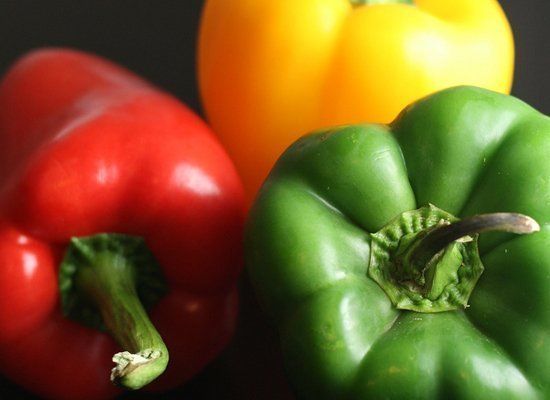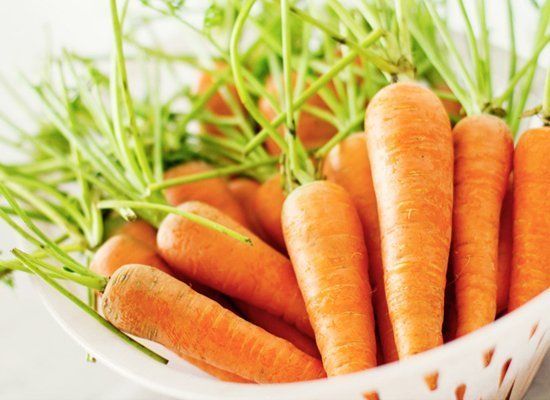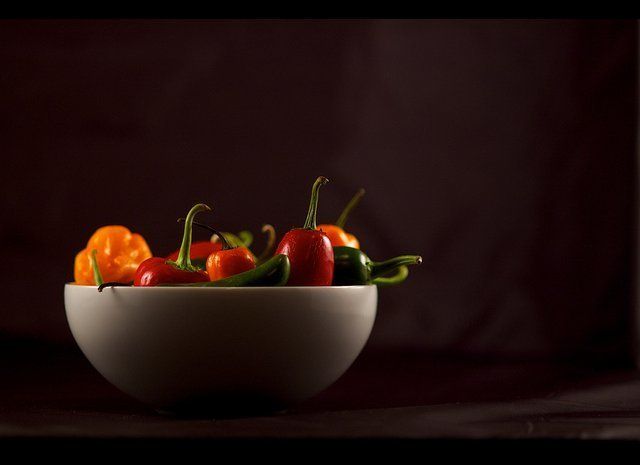Here are the new stars of the produce aisle that you've got to try this year.
By Lynn Andriani
Kale Sprouts

Courtesy of Salad Savoy
What they are: A mash-up of kale and brussels sprouts, also known as lollipop kale.
The backstory: A UK seed company developed the hybrid, calling it Flower Sprouts a few years ago, and it's since entered the American market, with one farm nicknaming the sprouts "lollipops." They're high in vitamins B6 and C.
How to eat them: Sautéed, steamed or stir-fried; they're also great in pesto (blanch them first in boiling salted water, then blend with basil, garlic and olive oil).
The backstory: A UK seed company developed the hybrid, calling it Flower Sprouts a few years ago, and it's since entered the American market, with one farm nicknaming the sprouts "lollipops." They're high in vitamins B6 and C.
How to eat them: Sautéed, steamed or stir-fried; they're also great in pesto (blanch them first in boiling salted water, then blend with basil, garlic and olive oil).
BroccoLeaf

Courtesy of Foxy
What they are: The leaves of the broccoli plant.
The backstory: The leaves from the broccoli plant are usually plucked off and discarded, but it turns out that they're actually sweet-tasting, with a sugar-snap-pea-like flavor, and are an excellent source of calcium, folate, vitamin C and the other vitamins and minerals you typically find in broccoli.
How to eat them: Sautéed, pureed in a smoothie or raw and chopped in a salad.
The backstory: The leaves from the broccoli plant are usually plucked off and discarded, but it turns out that they're actually sweet-tasting, with a sugar-snap-pea-like flavor, and are an excellent source of calcium, folate, vitamin C and the other vitamins and minerals you typically find in broccoli.
How to eat them: Sautéed, pureed in a smoothie or raw and chopped in a salad.
Rooster Potatoes

Courtesy of FreshDirect
What they are: Larger than new potatoes but smaller than Idaho, they're spuds with pink skins that turn golden brown when baked and crisp up better than any potato we've ever tried, with a light-yellow, fluffy inside.
The backstory: Like kale sprouts, Roosters got their start in Britain; one of the country's potato-farming families found that people loved the spud's nutty, buttery taste so much, they brought them to the U.S.
How to eat them: Roasted, mashed or even grilled (slice them into rounds; coat with oil, salt and pepper; grill 5 minutes per side).
The backstory: Like kale sprouts, Roosters got their start in Britain; one of the country's potato-farming families found that people loved the spud's nutty, buttery taste so much, they brought them to the U.S.
How to eat them: Roasted, mashed or even grilled (slice them into rounds; coat with oil, salt and pepper; grill 5 minutes per side).
Advertisement
Rainbow Carrots

Arinahabich/Thinkstock
What they are: Multi-colored carrots that come in purple, red, yellow and white.
The backstory:Geneticists have been working on Skittles-toned root vegetables for years now, but they're only just becoming popular. Anthocyanin, beta- and alpha-carotene pigments are responsible for purple carrots; lycopene (found in tomatoes) and beta-carotene make them red; xanthophylls and lutein are what turns them yellow; and, high fiber is what makes them white.
How to eat them: Raw is best (as dippers or shredded in salads), since the color fades when you cook them.
The backstory:Geneticists have been working on Skittles-toned root vegetables for years now, but they're only just becoming popular. Anthocyanin, beta- and alpha-carotene pigments are responsible for purple carrots; lycopene (found in tomatoes) and beta-carotene make them red; xanthophylls and lutein are what turns them yellow; and, high fiber is what makes them white.
How to eat them: Raw is best (as dippers or shredded in salads), since the color fades when you cook them.
Broccoflower

Chris Bence/Thinkstock
What it is: A cross between broccoli and cauliflower.
The backstory: Broccoflower started in Italy; a California farm now cultivates so much that it's transitioned from greenmarkets to supermarkets. The heads can range in color from lime green to yellowish green, and the taste is more cauliflower than broccoli -- but less crisp and dense than traditional (white) cauliflower. It has more vitamin C than oranges and more vitamin A than either broccoli or cauliflower.
How to eat it: However you like to eat cauliflower or broccoli. As with those veggies, keep in mind that the flavor is stronger when raw and milder when cooked.
The backstory: Broccoflower started in Italy; a California farm now cultivates so much that it's transitioned from greenmarkets to supermarkets. The heads can range in color from lime green to yellowish green, and the taste is more cauliflower than broccoli -- but less crisp and dense than traditional (white) cauliflower. It has more vitamin C than oranges and more vitamin A than either broccoli or cauliflower.
How to eat it: However you like to eat cauliflower or broccoli. As with those veggies, keep in mind that the flavor is stronger when raw and milder when cooked.
Related
Before You Go
Bell Peppers

Flickr: beebrulee
See the cocktail here.Bell peppers taste great in fajitas; and they saute just beautifully. But the dish we're really enjoying them in the summer is actually a glass: in our boozy beverages. Whether they're pureed and strained to serve as a juice mixer or simply muddled to extract their naturally sweet flavor, they add a freshness to cocktails.
Tomatillos

Flickr: craigCloutier
See the cocktail here.While it might be tempting to dice these up and make a salsa verde, you'll be happy you refrained and gave tomatillos a chance to shine in your cocktail. They make a great substitute for tomatoes in the classic Bloody Mary.
Beets

Flickr: Crystl
See the cocktail here.While beets might not look like something you want to drink when they're pulled from the ground, they are full of complex and earthy flavors (and patterns) when you cut into them. And what cocktail doesn't benefit from a little complexity?
Advertisement
Carrots

Flickr: S. Yodo
See the cocktail here.While drinking carrot juice is not uncommon, for one reason or another it hasn't made it's way to the world of cocktails very often. And that's a real shame. They make for a beautiful drink.
Ramps

Flickr: kthread
See the cocktail here.Ramps get a lot of hype during the short time they're in season. They make their way into every dish; so why not try them in your evening drink? The crisp, clean flavors work best in a classic drink like a martini.
Jalapenos

Flickr: Wahooo
See the cocktail here.If there's one thing that cocktails are missing overall, it's a little bit of heat. And it you're a fan of spicy foods, than you'll love a jalapeno cocktail. Jalapenos pair well with tequila-, vodka- and whisky-based drinks.
Advertisement
Rhubarb

Flickr: whitneyinchicago
See the cocktail here.We all know that the flavors of rhubarb sing when in a pie, but its grassy and tart flavors add an unmatchable quality to cocktails. And it can work in so many different recipes: daquiris, mojitos and margaritas.
Cucumber

Flickr: AhmadHammoud
See the cocktail here.Cucumbers do make their way into our glasses from time to time, and when they do it's wonderful. They're crisp, light and refreshing -- which is just about everything we want our cocktails to be.
Advertisement

